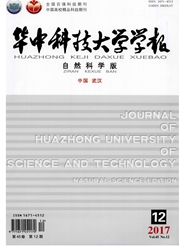

 中文摘要:
中文摘要:
根据塑性形变理论和流动理论,利用相邻平衡准则建立了矩形薄板在阶跃载荷作用下的塑性动力屈曲控制方程,将临界力参数和动力特征参数作为一对特征参数求解.定量计算了两个特征参数的值和动力屈曲模态,并对两种理论下的计算结果进行了比较,同时分析了薄板塑性动力屈曲和弹性动力屈曲之间的差别,结果表明:流动理论计算的临界力参数大于形变理论计算值,而动力特征参数小于形变理论计算值,利用形变理论计算板的塑性动力屈曲时偏于保守;两种理论计算的板的塑性动力屈曲无量纲临界力参数和动力特征参数均大于弹性动力屈曲的相关参数.相比于流动理论计算结果,形变理论下薄板的屈曲模态峰值更加靠近受载端,说明形变理论下塑性波区对屈曲模态的影响较大.
 英文摘要:
英文摘要:
According to the deformation theory and flow theory of plasticity,the governing equations for the plastic dynamic buckling of rectangular thin plates subjected to step load were established by the adjacent-equilibrium criterion.The critical load parameter and dynamic characteristic parameter were treated as the twin characteristic parameters.The dynamic buckling modes,the critical load parameter and the dynamic characteristic parameter were calculated quantitatively.The calculation results under the two theories were compared and studied.Meanwhile,the differences between the plastic dynamic buckling and the elastic dynamic buckling of the plates were analyzed.The results show that compared to the calculated results of deformation theory,the critical load parameter is greater and the dynamic characteristic parameter is smaller by using flow theory.The results are conservative by using flow theory to solve the problems of plastic dynamic buckling of plates.The twin characteristic parameters of the plates under plastic dynamic buckling condition are greater than the relevant elastic dynamic buckling parameters.Compared to the calculated results of flow theory,the amplitude of buckling mode under deformation theory are closer to the impact end.Plastic wave zone has more influences on the buckling modes under deformation theory.
 同期刊论文项目
同期刊论文项目
 同项目期刊论文
同项目期刊论文
 期刊信息
期刊信息
